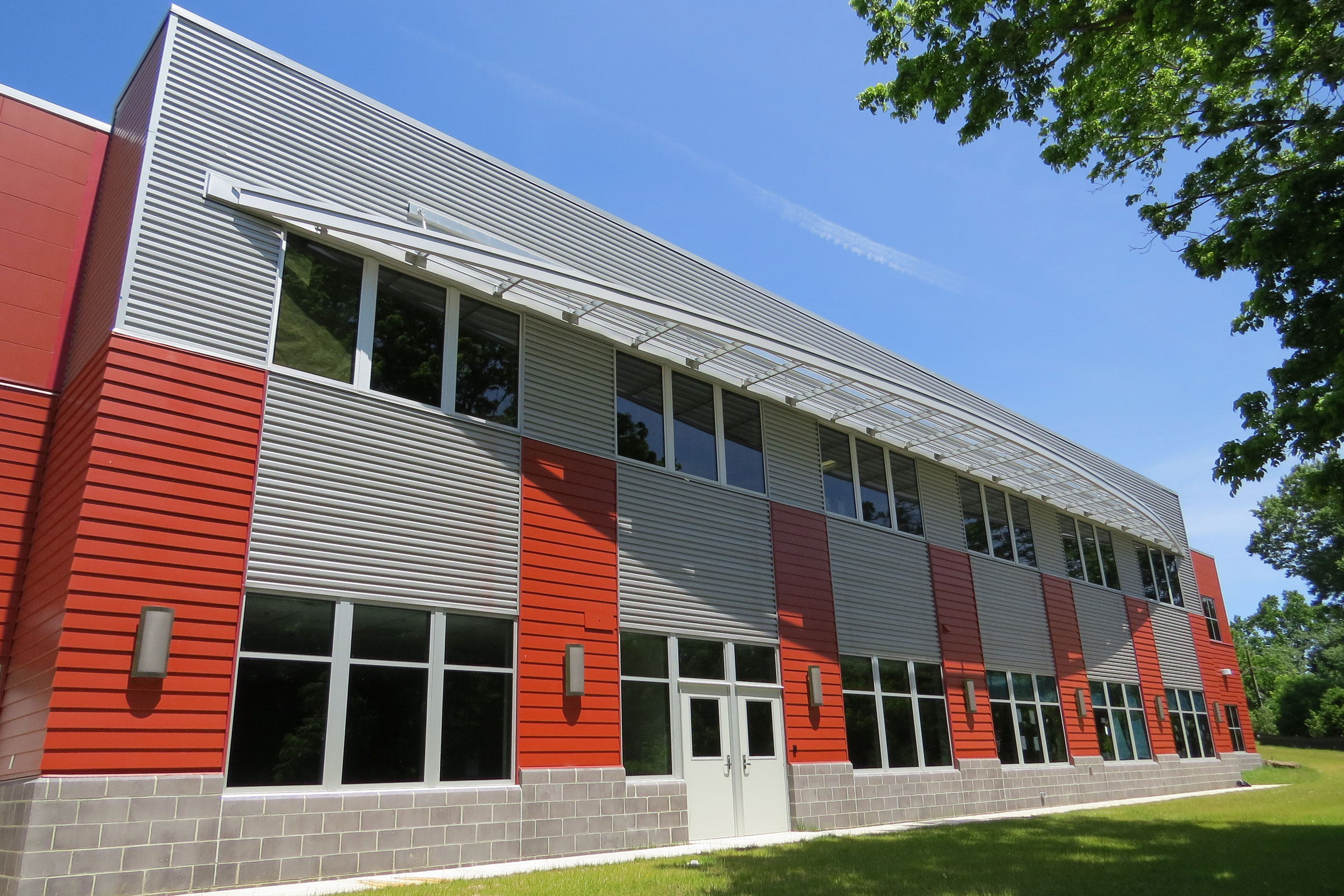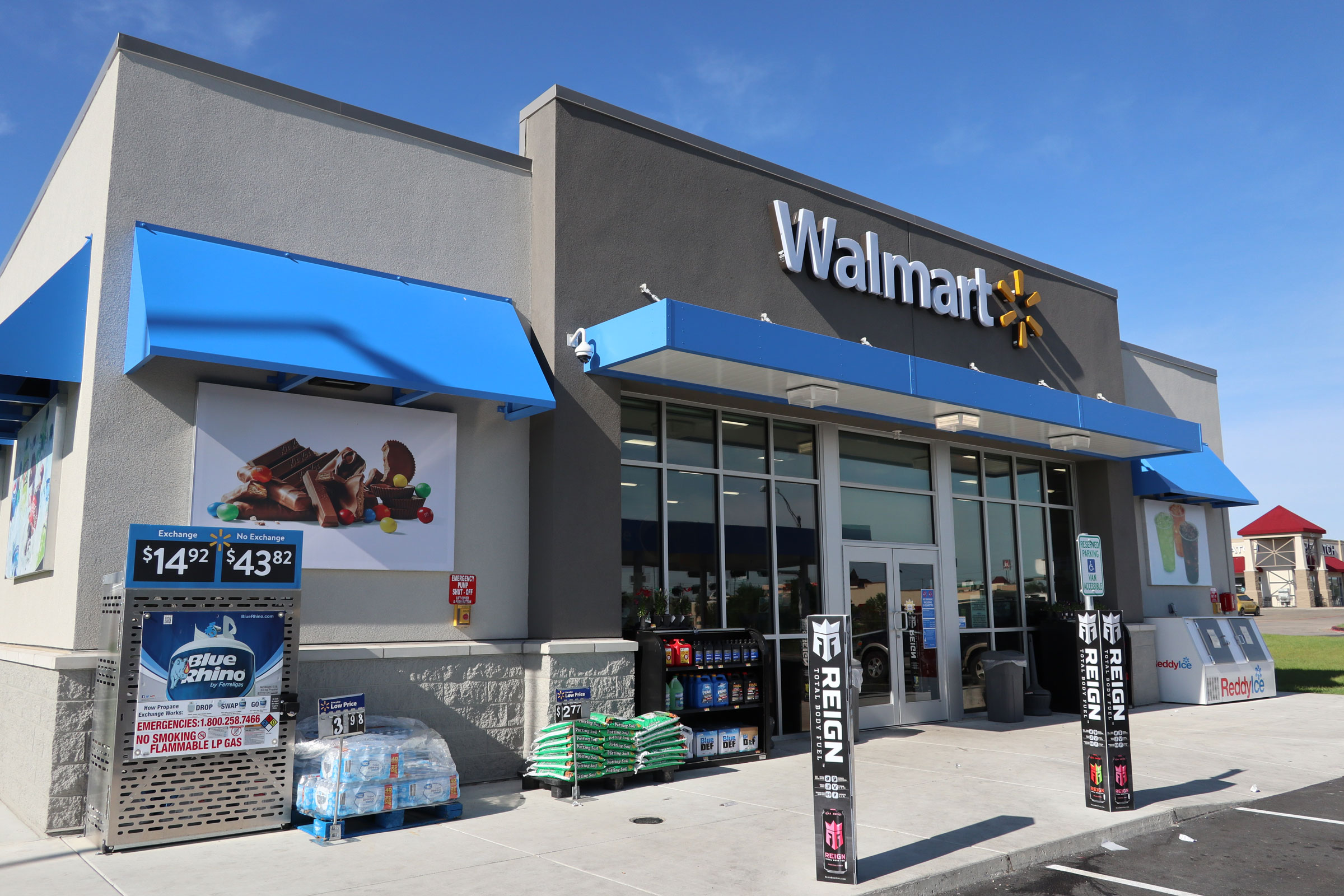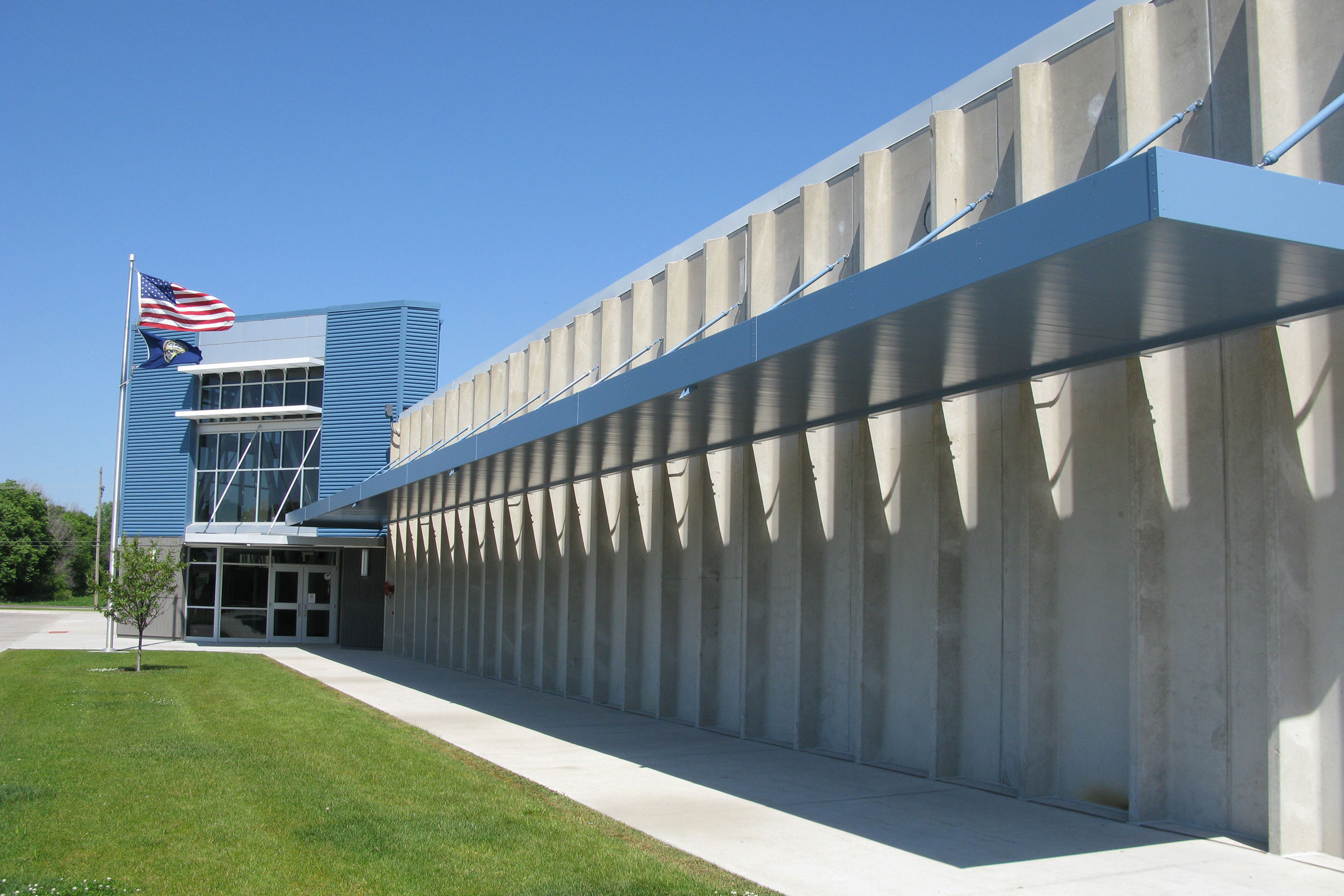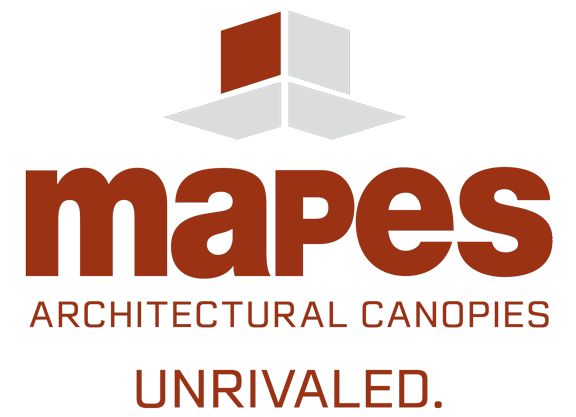Story at a glance:
- For more than 70 years Mapes Architectural Canopies has specialized in high-performance canopies made from extruded aluminum.
- No matter what design or sustainability features you’re after, Mapes Architectural Canopies offers valuable insights on which canopies work best where and why.
- Mapes Architectural Canopies has supplied a canopy to all 50 US states.
Canopies have long been a classic exterior detail on various types of structures throughout the world, their origins stretching back hundreds if not thousands of years. Today’s significantly evolved and customized versions, known as architectural canopies, are commonly found on everything from schools and churches to retail stores and municipal offices. The best ones combine high-quality materials with sophisticated design properties to perform a variety of key functions while also complementing a building’s aesthetic.
Since its founding nearly seven decades ago, Lincoln, Nebraska–based Mapes Architectural Canopies has specialized in high-performance canopies made from extruded aluminum. Besides being design-friendly and long-lasting, the material is also incredibly strong and extremely cost-effective. Mark Mundorff, a 30-year industry veteran and the company’s vice president of product design and promotion, is a leading expert in the field.
With modern canopies, he says, form nearly always follows function. And the function, most often, is to shield people and equipment—whether it’s at main entrances or rear loading docks. “It keeps those pathways open for business use,” Mundorff says. “Canopies also make it much easier to distinguish where people should go as far as wayfinding.”
Cold Weather Canopies

Mapes Lumishade canopies were added to the first floor of the Catholic Charities offices to protect people from weather while being aesthetically pleasing. Photo courtesy of Mapes Architectural Canopies
“Canopies are often required to take a certain snow load to protect whatever’s underneath them so they don’t collapse,” Mundorff says. “The further north you go, the more critical it is to have a canopy that is designed to take at least a minimum snow load, if not an unexpected load, from peculiar weather patterns.”
For Mapes customers this means installing something from the company’s pre-engineered Lumishade or Super Lumideck lines that feature solid aluminum decking that’s maintenance-free and—this is crucial—are engineered and designed as a system to meet the strictest building code requirements. A clean and smooth soffit underside also allows for the mounting of LED lighting fixtures.
“A lot depends on the climate and how critical the protected activity is,” Mundorff says. “But as you push the expected environmental limits, your best bet is to go with the heavier duty canopies that are designed to handle high snow loads.”
Warm Weather Canopies

SuperShade is pre-engineered for most wall conditions and helps protect from the sun while keeping design clean, like at Linwood Center School seen here. Photo courtesy of Mapes Architectural Canopies
“The further south you go the less weather is of critical importance,” Mundorff says, noting that canopies in most areas of the southern US need not be as impervious to the elements.
Sun fades materials, he explains, but it doesn’t strain them like snow does, which makes warmer climates ideal locations for lighter-weight options like Mapes’ Supershade. A longer-lasting alternative to canvas, the SuperShade canopy is an open-deck louvered system that offers passive sun control that mitigates solar gain. Better to block sunlight outside a structure before it enters through windows or glass doors, warms the interior, and impacts the energy efficiency of cooling systems—not to mention the overall comfort level.
How to Incorporate Branding

Mapes delivered this architectural canopy design to enhance Walmart’s branding and provide a protected entry with attractive, secure light fixture mounts. Photo courtesy of Mapes Architectural Canopies
While a canopy’s stylistic qualities are typically far less important than its functional ones, that isn’t the case when it comes to corporate branding, where street appeal plays a central role. Canopies are often the first feature prospective customers see, so they also need to accurately reflect a company’s design aesthetic. Mapes works with a number of well-known national chains, from retailers to restaurants, to create customized canopies that meet those requirements.
“Certain colors are synonymous with certain brands,” says Kendall Frantz, director of national Account Development for Mapes Architectural Canopies. “So it’s critical that the color be properly executed. More than other materials, aluminum is uniquely positioned to take on a custom-matched color. However, you must ensure you’re using a high-quality, professionally applied finish.” Mapes uses a 70% fluoropolymer finish that’s superior for color retention.
Although Mapes canopies have evolved considerably in terms of materials and manufacturing methods, their durability has been a constant since day one. “As I travel around the country,” Frantz says, “I’m pleased by the number of our canopies I see from the ’50s and early ’60s that are still in place and have held their finish.”




